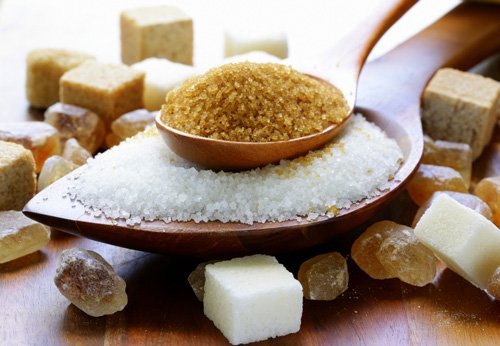Sugar Facts

Sugar
Sugar as a commodity in its own right can be traced back to several thousand years in China and India. A definite reference dates to 510 B. C. when soldiers of the Persian Emperor Darius saw sugarcane growing on the banks of the River Indus. They called it the reeds which produce honey without bees. Much later it was grown in Persia and the Arabs took it to Egypt. The word sugar is itself derived from an Arabic word. Sugarcane, to which all the references refer, is a member of the grass family. It can grow up to 15 feet tall, with leaves at the top and a hollow stalk filled with a sweet juice or sap from which sugar can be extracted. A perenial tropical plant, it grows best in very warm climates. It is ready for harvesting after 10 to 12 months.Sugarcane is a perennial grass belonging to the genues saccharum, tribe Andropogoneae, and family poaceae (Graminea). It's one of the most Photosynthetically - efficient C4 plant. Inter - breeding among species has led to the establishment of the sugarcane in areas most unlikely for prodution. Sugarcane today is cultivated in 127 countries in both the Subtropics anb tropics.
Of the six species of sugracane generally recognized, two are considered wild and four are domesticated.
Saccharum Officinarum
Used primarily for sugar production. They are moderately tall, of various colours, thick stalks, low in fibre and high in sucrose content. There are over four hundred clones of S. officinarumSaccharum Spontaneum
This specie is highly adaptable, resistant to diseases, cold, grought and other difficult growing conditions. For this reason, this specie is widely used to interbreed with S. officinarum. However, S.spontaneum id thin-stalked, high in fibre and low in sucrose content.Saccharum Sinense
This specie has been used for sugar production in areas of India, China, Japan, Philippines and Hawaii. Stalks are generally thin, but resistant to disease, drought and flooding.Saccharum Barbari
This specie is native of India. Typically has narrow leaves, is a short cane, and is considered hardy. Has been used for sugar production.Saccharum robustum
This specie was discovered in New Guinea. Stems are large in diameter, tall and vigorous. Susceptible to similar diseases as S. officinarumAaccharum edule
This specie is thought to be in intergeneric hybrid of Miscanthus floridus and S. robustum. It has the appearance of cauliflower, and can be eaten. S. edule is considered sterile.Saccharum is thought to have evolved in the Burma-China-India area of Southern Asia. Typical of Southern Asia are S.spontaneum, S.sinense and S. barbari; relatively juicy forms of the latter two were used at the beginning of sugarcane cultivation and processing in India and China. As cane spread to other areas, S. robustum developed in the Islands of Southeast Indonesia and evolved into S. officinarum in the new Guinea area. Each of the five species, other than S. edule, generally produces fertile flowers and can be intercrossed. Commercially sugarcane cultivators are mostly tri-specie hybrids involving S. officinarum, S. spontaneum, and either S. barbari or S. sinense.
